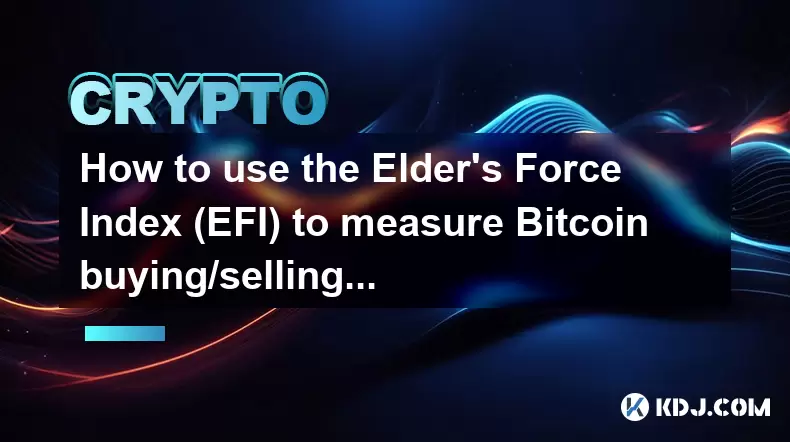-
 Bitcoin
Bitcoin $108,708.8110
0.60% -
 Ethereum
Ethereum $2,561.6057
1.91% -
 Tether USDt
Tether USDt $1.0001
-0.03% -
 XRP
XRP $2.2795
0.57% -
 BNB
BNB $662.2393
1.00% -
 Solana
Solana $153.1346
3.74% -
 USDC
USDC $1.0000
0.00% -
 TRON
TRON $0.2877
0.97% -
 Dogecoin
Dogecoin $0.1710
3.93% -
 Cardano
Cardano $0.5871
1.61% -
 Hyperliquid
Hyperliquid $39.6663
1.68% -
 Sui
Sui $2.9032
0.79% -
 Bitcoin Cash
Bitcoin Cash $496.1879
1.71% -
 Chainlink
Chainlink $13.5807
3.01% -
 UNUS SED LEO
UNUS SED LEO $9.0777
0.61% -
 Stellar
Stellar $0.2514
4.51% -
 Avalanche
Avalanche $18.1761
1.86% -
 Shiba Inu
Shiba Inu $0.0...01173
1.72% -
 Toncoin
Toncoin $2.8010
-4.23% -
 Hedera
Hedera $0.1594
3.21% -
 Litecoin
Litecoin $87.0257
-0.53% -
 Monero
Monero $319.1217
1.79% -
 Polkadot
Polkadot $3.3853
0.68% -
 Dai
Dai $0.9999
-0.01% -
 Ethena USDe
Ethena USDe $1.0003
0.02% -
 Bitget Token
Bitget Token $4.3420
-0.97% -
 Uniswap
Uniswap $7.3772
1.39% -
 Aave
Aave $286.6277
5.61% -
 Pepe
Pepe $0.0...09994
2.33% -
 Pi
Pi $0.4589
1.76%
Is Bitcoin a bubble that will pop?
Bitcoin's volatility and speculative nature fuel bubble debates, yet its decentralized innovation and growing institutional adoption suggest potential beyond mere speculation.
Jul 07, 2025 at 05:36 pm

What Defines a Financial Bubble?
A financial bubble occurs when the price of an asset rises rapidly due to speculation and hype, far exceeding its intrinsic value. Eventually, confidence wanes, leading to a sharp decline in value—often referred to as the bubble "popping." In traditional markets, assets like real estate or tech stocks have historically formed bubbles. Bitcoin, as a decentralized digital asset with volatile price movements, has often been compared to such bubbles.
One key characteristic of a bubble is excessive investor enthusiasm without fundamental backing. For Bitcoin, this debate centers on whether it has intrinsic value or if its worth is purely speculative. Proponents argue that Bitcoin's capped supply, decentralization, and growing adoption give it long-term value. Critics, however, believe its volatility and lack of regulatory oversight make it prone to speculative excess.
Historical Price Volatility of Bitcoin
Bitcoin has experienced multiple boom-and-bust cycles since its inception. Notably, in late 2017, its price surged above $19,000 before crashing below $4,000 within months. A similar pattern occurred in 2021, where institutional interest pushed prices beyond $60,000, followed by a significant correction. These sharp price swings fuel concerns about a potential bubble.
However, historical volatility does not necessarily indicate a bubble. Traditional assets like gold and equities also experience volatility, especially during economic uncertainty. What distinguishes Bitcoin’s volatility is its relatively short history and evolving market dynamics. Each cycle tends to attract new investors while testing the resolve of existing ones.
Comparisons to Historical Bubbles
Many analysts compare Bitcoin to historical bubbles such as the Dutch Tulip Mania (1630s), the Dot-com Bubble (early 2000s), and the Housing Bubble (2008). In each case, irrational exuberance drove prices to unsustainable levels before a collapse. The argument for Bitcoin being a bubble hinges on its speculative nature and rapid price appreciation.
Unlike tulips or dot-com companies, Bitcoin offers a unique technological innovation—a decentralized ledger system that enables peer-to-peer transactions without intermediaries. This utility factor differentiates it from purely speculative assets. Moreover, unlike housing, which was inflated by easy credit and lax regulation, Bitcoin operates outside traditional banking systems.
Institutional Adoption and Market Maturity
In recent years, major financial institutions have begun integrating Bitcoin into their offerings. Companies like MicroStrategy, Tesla, and Square have allocated portions of their treasuries to Bitcoin. Additionally, regulated Bitcoin futures and ETFs are gaining traction, signaling increased legitimacy.
This institutional involvement suggests that Bitcoin may be transitioning from speculative asset to mainstream investment. While retail traders still play a significant role, growing institutional participation could stabilize prices over time. However, regulatory risks and macroeconomic factors continue to influence its trajectory.
Regulatory Environment and Government Stance
Governments worldwide have taken varied approaches to Bitcoin. Some countries, like El Salvador, have embraced it as legal tender, while others, such as China, have imposed strict bans. Regulatory clarity remains a critical factor influencing Bitcoin’s long-term viability.
Uncertainty around taxation, anti-money laundering (AML) compliance, and environmental concerns regarding mining can affect investor sentiment. Regulatory crackdowns could trigger sell-offs, but balanced frameworks might encourage broader adoption. As governments refine their stance, Bitcoin’s position in the global financial ecosystem will become clearer.
Technological and Economic Fundamentals
Bitcoin’s underlying blockchain technology provides transparency, security, and immutability. Its capped supply of 21 million coins introduces scarcity, potentially supporting long-term value. Unlike fiat currencies, which can be printed indefinitely, Bitcoin’s monetary policy is algorithmically enforced.
Economists and technologists debate whether these fundamentals justify its current valuation. Scarcity alone doesn’t guarantee value, but combined with increasing demand and use cases—such as remittances, store of value, and decentralized finance (DeFi)—it presents a compelling argument. However, scalability issues and energy consumption remain challenges.
Frequently Asked Questions
Does Bitcoin have any real-world utility?
Beyond speculation, Bitcoin serves as a censorship-resistant form of money, particularly valuable in regions with unstable currencies or authoritarian regimes.
Can Bitcoin lose all its value?
Theoretically possible, though unlikely given its decentralized nature and growing adoption. Complete loss would require widespread network failure or irreversible technological obsolescence.
How do macroeconomic trends affect Bitcoin’s price?
Inflation, interest rates, and geopolitical instability can drive demand for alternative stores of value like Bitcoin, impacting its price significantly.
Is Bitcoin safer than traditional investments?
Safety depends on individual risk tolerance. Bitcoin lacks FDIC insurance and government backing but offers protection against currency devaluation and centralized control. Disclaimer:info@kdj.com
The information provided is not trading advice. kdj.com does not assume any responsibility for any investments made based on the information provided in this article. Cryptocurrencies are highly volatile and it is highly recommended that you invest with caution after thorough research!
If you believe that the content used on this website infringes your copyright, please contact us immediately (info@kdj.com) and we will delete it promptly.
- Ozak AI Presale: The AI Token Race to $1 and Beyond
- 2025-07-08 00:30:13
- Solana, Memecoins, and BONKbot: Riding the Wave of Telegram Trading
- 2025-07-08 01:10:13
- Bitcoin Miners, AI Wars, and the US Learning Curve: A New York State of Mind
- 2025-07-08 00:30:13
- XRP Price, Whale Transfers, and Breakout Potential: What's Next?
- 2025-07-08 01:30:13
- Arctic Pablo: The Meme Coin Melting Crypto in 2025?
- 2025-07-08 00:50:13
- Crypto Miner's Ethereum Bet: Stock Surge or Risky Gamble?
- 2025-07-08 01:50:13
Related knowledge

How to identify a volatility contraction pattern on Bitcoin using indicators?
Jul 07,2025 at 07:28am
What is a Volatility Contraction Pattern in Bitcoin Trading?A volatility contraction pattern refers to a phase where the price movement of an asset, such as Bitcoin, becomes increasingly narrow over time. This typically signals that the market is consolidating and may be preparing for a breakout or breakdown. In simpler terms, when volatility contracts,...

What is the Woodies CCI indicator and can it be used for Bitcoin?
Jul 04,2025 at 05:14pm
Understanding the Woodies CCI IndicatorThe Woodies CCI indicator is a variation of the traditional Commodity Channel Index (CCI), which was originally developed by Donald Lambert. The standard CCI measures the current price level relative to an average price over a given period, typically 14. However, the Woodies version modifies this calculation to mak...

How to use indicators to trade the opening range breakout for Bitcoin CME futures?
Jul 05,2025 at 07:35pm
What Is the Opening Range Breakout Strategy?The opening range breakout (ORB) strategy is a popular trading technique used in both traditional markets and cryptocurrency futures, particularly for Bitcoin on the CME. This method involves identifying a specific price range formed during the early phase of a trading session and then taking positions when th...

How to use the Relative Vigor Index (RVI) for Bitcoin trading?
Jul 07,2025 at 02:00pm
Understanding the Relative Vigor Index (RVI)The Relative Vigor Index (RVI) is a technical analysis tool used to assess the strength of price movements in financial markets, including cryptocurrencies like Bitcoin. It operates under the assumption that prices tend to close higher in an uptrend and lower in a downtrend. The RVI compares the closing price ...

What does a bearish cross on the Stochastic RSI mean for Bitcoin?
Jul 05,2025 at 07:18pm
Understanding the Stochastic RSI IndicatorThe Stochastic RSI (Relative Strength Index) is a momentum oscillator used in technical analysis to identify overbought or oversold conditions in an asset's price. It combines two well-known indicators — the RSI and the Stochastic Oscillator — to provide more nuanced signals than either could alone. The Stochast...

How to use the Elder's Force Index (EFI) to measure Bitcoin buying/selling pressure?
Jul 07,2025 at 02:50am
What is the Elder's Force Index (EFI)?The Elder's Force Index (EFI) is a technical indicator developed by Dr. Alexander Elder to measure the power behind price movements in financial markets. It combines both price change and volume to assess buying or selling pressure over a specific period. In the context of Bitcoin trading, EFI helps traders understa...

How to identify a volatility contraction pattern on Bitcoin using indicators?
Jul 07,2025 at 07:28am
What is a Volatility Contraction Pattern in Bitcoin Trading?A volatility contraction pattern refers to a phase where the price movement of an asset, such as Bitcoin, becomes increasingly narrow over time. This typically signals that the market is consolidating and may be preparing for a breakout or breakdown. In simpler terms, when volatility contracts,...

What is the Woodies CCI indicator and can it be used for Bitcoin?
Jul 04,2025 at 05:14pm
Understanding the Woodies CCI IndicatorThe Woodies CCI indicator is a variation of the traditional Commodity Channel Index (CCI), which was originally developed by Donald Lambert. The standard CCI measures the current price level relative to an average price over a given period, typically 14. However, the Woodies version modifies this calculation to mak...

How to use indicators to trade the opening range breakout for Bitcoin CME futures?
Jul 05,2025 at 07:35pm
What Is the Opening Range Breakout Strategy?The opening range breakout (ORB) strategy is a popular trading technique used in both traditional markets and cryptocurrency futures, particularly for Bitcoin on the CME. This method involves identifying a specific price range formed during the early phase of a trading session and then taking positions when th...

How to use the Relative Vigor Index (RVI) for Bitcoin trading?
Jul 07,2025 at 02:00pm
Understanding the Relative Vigor Index (RVI)The Relative Vigor Index (RVI) is a technical analysis tool used to assess the strength of price movements in financial markets, including cryptocurrencies like Bitcoin. It operates under the assumption that prices tend to close higher in an uptrend and lower in a downtrend. The RVI compares the closing price ...

What does a bearish cross on the Stochastic RSI mean for Bitcoin?
Jul 05,2025 at 07:18pm
Understanding the Stochastic RSI IndicatorThe Stochastic RSI (Relative Strength Index) is a momentum oscillator used in technical analysis to identify overbought or oversold conditions in an asset's price. It combines two well-known indicators — the RSI and the Stochastic Oscillator — to provide more nuanced signals than either could alone. The Stochast...

How to use the Elder's Force Index (EFI) to measure Bitcoin buying/selling pressure?
Jul 07,2025 at 02:50am
What is the Elder's Force Index (EFI)?The Elder's Force Index (EFI) is a technical indicator developed by Dr. Alexander Elder to measure the power behind price movements in financial markets. It combines both price change and volume to assess buying or selling pressure over a specific period. In the context of Bitcoin trading, EFI helps traders understa...
See all articles

























































































